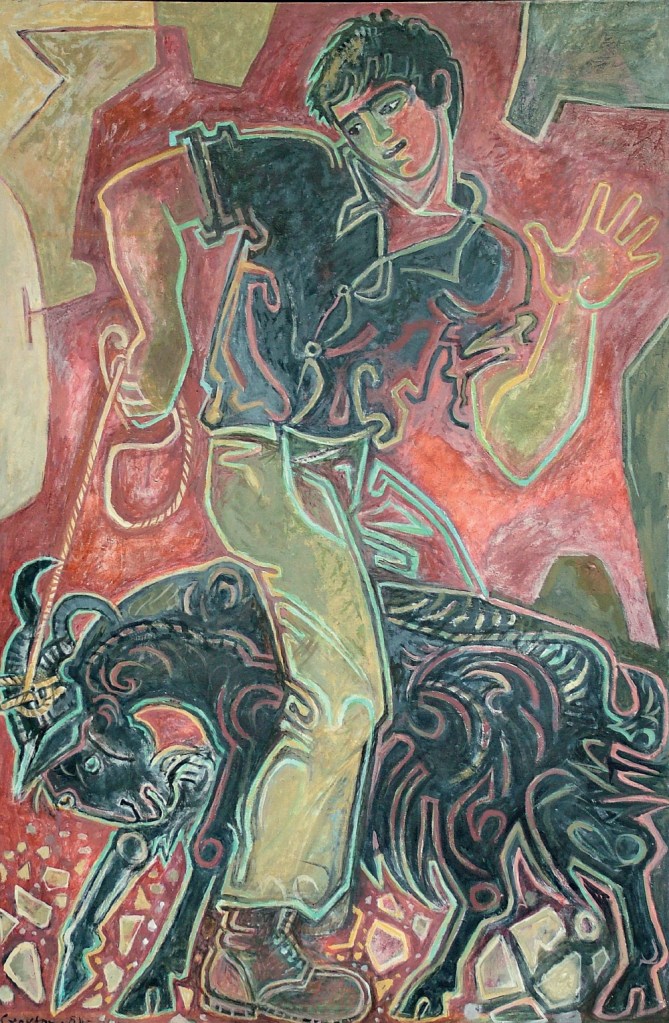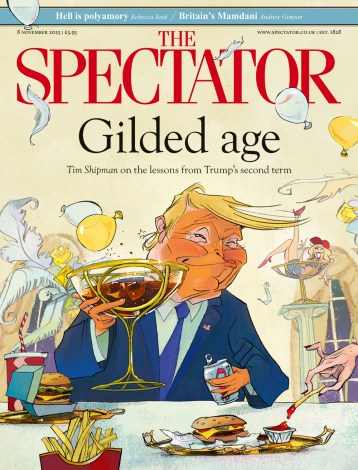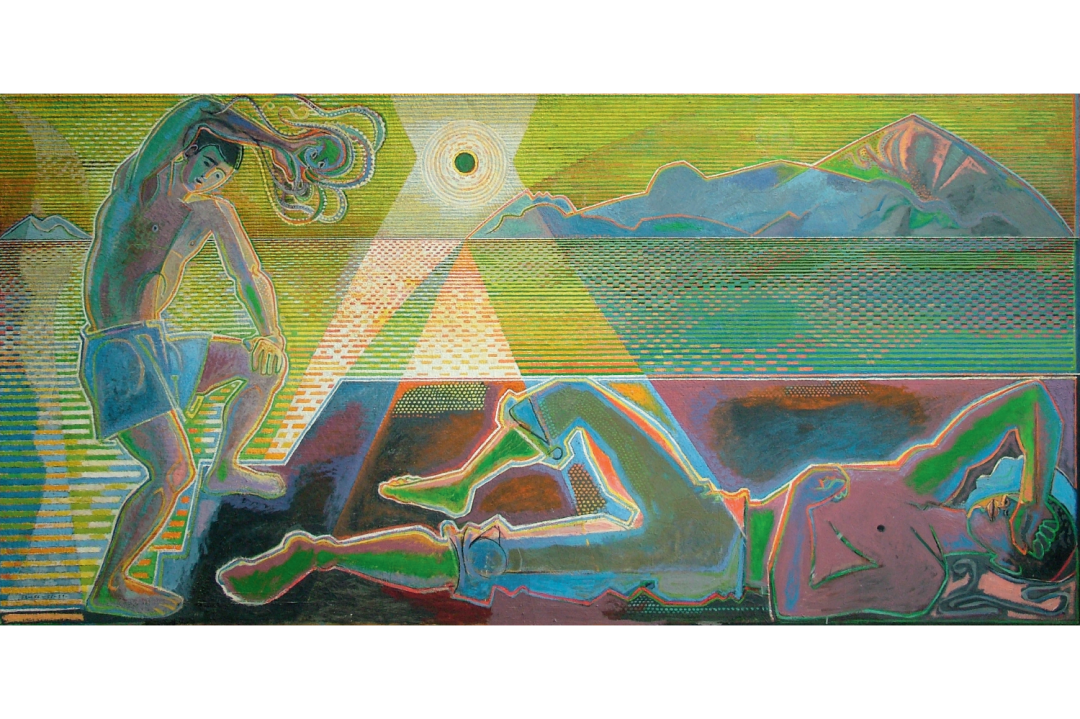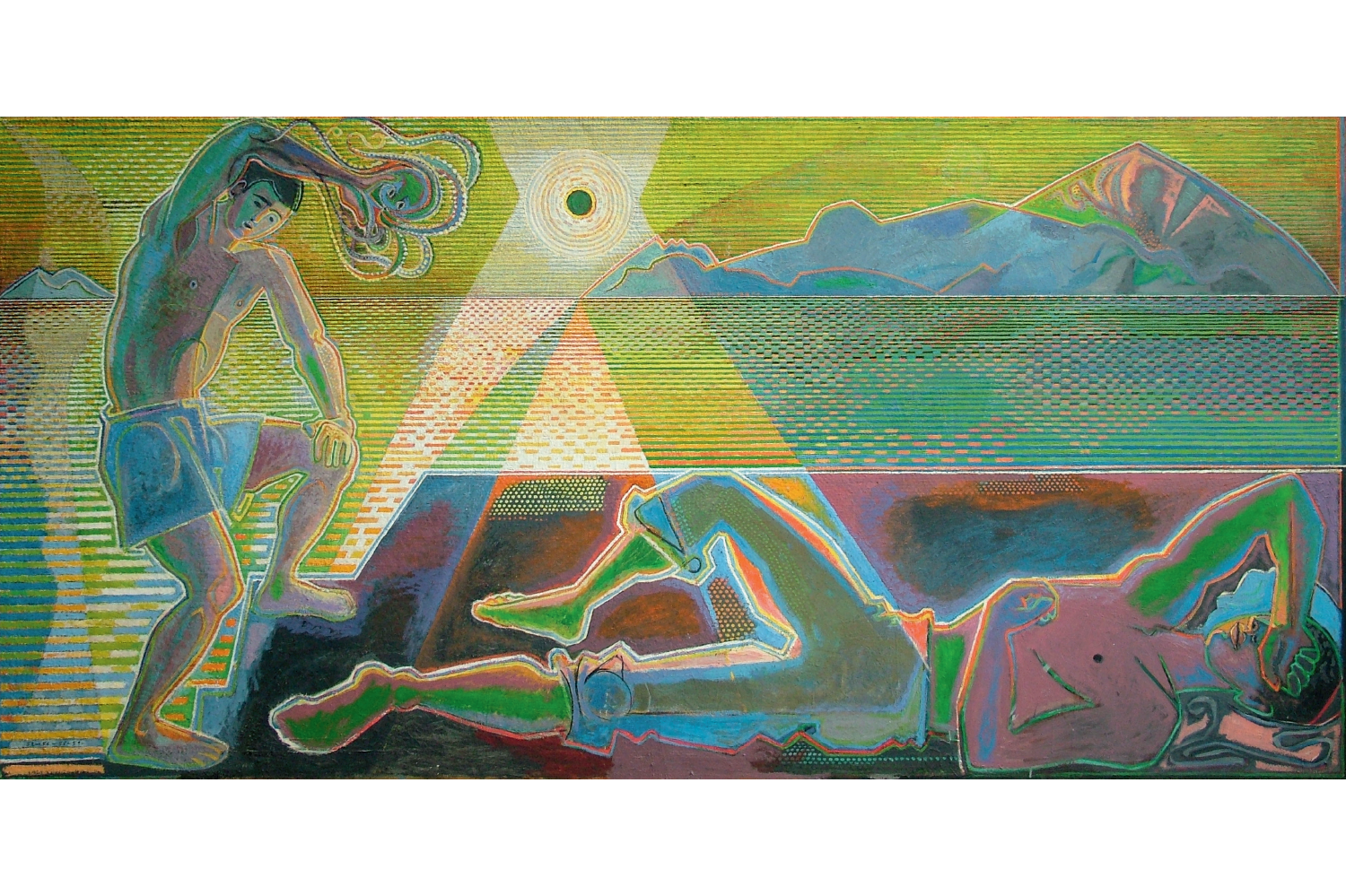The sensuality of the light in John Craxton’s painting ‘Two Figures and Setting Sun’ (1952-67) has to be seen to be believed. Viewing this large work in Pallant House, you feel its full force. Craxton was concerned with a scene’s essence, rather than simply its appearance and here he achieves not merely an effect but affect. In spite of most of the light being painted in yellows and oranges rather than white, the contrast and refraction of the rays produce a blinding sensation much like staring into the sun on a hot day.
It was as a chorister at Chichester Cathedral that Craxton’s daily encounter with two 12th-century Romanesque bas-reliefs taught him the timelessness of great art; that, even though it was from the distant past, something fresh and modern endured.
He noticed the everyday, sometimes even the mundane, and restored to it a profound significance
While his early work was heavily influenced by Samuel Palmer and Graham Sutherland and belonged to the rich, pastoral tradition of British romantic art, one can see a shift from the dark, melancholic figures alone in forbidding landscapes as early as 1945, when he escaped post-war London for the heat and brighter light of the Isles of Scilly.
In 1946, he travelled to Athens, and Greece became home for much of his life. From then on, his work is full not only of the light and heat of the Aegean, but of figures who celebrate their embodiment; either moving or in repose, they practically vibrate with pleasure and vitality.
A review of Craxton’s 1967 retrospective at the Whitechapel Gallery dismissed his art as somehow unserious, owing to the ‘handicap of happiness’. Yet, the world depicted is wild and cruel even as it is rich and beautiful. In ‘Two Figures’, the fisherman raises an octopus above his head to dash it against the ground, while the prostrate figure is likely one of many sponge-fishers crippled by the bends. Others never returned to the surface alive.
He became fascinated by what he called, ‘the persistence of myth in everyday existence’. This can be seen throughout his work, whether it is a demobbed butcher back-flipping over an upturned chair, echoing bull-leaping frescoes of Knossos; or the young man wrestling a goat in ‘Voskos 1’, inspired by a Minoan gold cup found in a Spartan tomb (see below). He rejected the label neo-romantic, saying ‘you are either “Romantic” in spirit or you are not’. But it is perhaps this remaking of myth that sets him apart from his contemporaries. The repetition of subject matter – be it cats playing, men dancing, diners at tavernas or working Greeks – ritualises daily life.

In this sense, his work beautifully embodies what Iris Murdoch described in her 1970 essay ‘Existentialists and Mystics’. There Murdoch identifies two directions for the modern novel, or art more generally. Existentialists are impoverished of meaning and left with nothing but the assertion of their will. But mystics strive for freedom, virtue and understanding through a religious consciousness liberated from the trappings of religion. They invent their own religious symbolism while being concerned with the everyday things that man needs – like food and shelter – not with what philosophers and thinkers feel he ought to need.
Craxton’s work demonstrates all of the above in abundance. By Murdoch’s measure, his contemporaries were existentialists, he a kind of Arcadian mystic.
The mystic finds virtue through the act of attention. Arguably, this intense act of looking meant that Craxton led a good life in every sense. Predominantly homosexual, his ability to see the beauty in the individual also led to many women lovers, including a passionate affair with Margot Fonteyn. The scientist and critic Keith Roberts describes the polychromatic lines around Craxton’s backlit subjects as a sign of his capacity to perceive what we are usually conditioned not to see. He noticed the everyday, sometimes even the mundane, and restored to it a profound significance.
Pallant House is exhibiting more than one hundred works, including several from private collections never previously shown. There is also a new, specially commissioned two-screen tribute to Craxton by Tacita Dean. The pair first met in 1982 when Dean was 16 and he showed her ‘that to live the life of an artist was possible and even pleasurable’. Dean’s work, too, finds myth inherent in the modern day, such as the tragic events that led to the death of Donald Crowhurst or the mystical properties of the green ray.
This exhibition depicts another world; but it is a world firmly embedded in the human body and the everyday reality of this one.







Comments